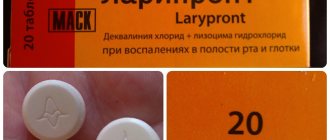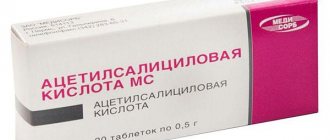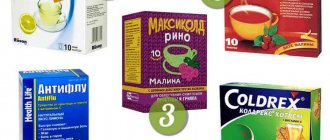The drug Vigantol is effective when necessary to regulate the exchange of phosphorus and calcium in the body.
Contents:
- Release form and composition
- Pharmacology and pharmacodynamics
- Why take Vigantol
- How to take Vigantol correctly for infants
- Contraindications and adverse reactions
- Overdose
- How to properly store Vigantol
- Interaction
- Reviews about Vigantol
- Which drug is better: Aquadetrim or Vigantol
- How to replace Vigantol
- Where to buy Vigantol, price
Indications for use
Recommendations for prescribing Vigantol 20,000 are:
- prevention and treatment of rickets and osteomalacia in adults and children, vitamin D deficiency due to malabsorption;
- maintenance treatment of osteoporosis in combination with calcium and for specific treatment of osteoporosis;
- prevention of skeletal calcification disorders in adulthood (rickets) in premature infants;
Vigantol is also used in the treatment of secondary hypoparathyroidism in adults.
Release form
The drug is sold in small bottles of 10 ml. They are made of brown-orange colored solar control glass. The bottles are packaged in cardboard boxes with instructions for use. "Vigantol" should be taken only a few drops per day. To make it convenient to measure out this amount of the drug, the bottles are equipped with polyethylene dispensers (dropper plugs). The container is closed with a screw-on white polypropylene lid.
Compatibility of Vigantol with other medications
The manufacturer Vigantol reports that if a patient takes the drug together with other drugs, this must be reported to the doctor.
Phenytoin, Rifampicin and barbiturates may reduce the effect of vitamin D3 due to induction of liver enzymes.
Patients treated with cardiac glycosides should monitor ECG parameters and calcium levels.
Concomitant use of thiazide diuretics increases the risk of hypercalcemia because they reduce urinary calcium loss.
When combining the drug with vitamin D metabolites or analogues, careful monitoring of serum calcium levels is recommended.
Medicines that cause fat malabsorption, such as Orlistat and Cholestyramine, may impair the absorption of vitamin D.
Vigantol®
Symptoms of Vitamin D3 Overdose
Acute and chronic overdose of vitamin D3 can lead to hypercalcemia, which can be persistent and potentially life-threatening. Symptoms are general and may include cardiac arrhythmias, thirst, nausea, vomiting, constipation, polydipsia, polyuria, dehydration, hypercalciuria with kidney stones, nephrocalcinosis, muscle weakness, adynamia and confusion. Moreover, chronic overdose can lead to calcium deposition in blood vessels and tissues.
Daily doses up to 500 IU/day
Long-term overdose of vitamin D3 can lead to hypercalcemia and hypercalciuria. Significant overuse over a long period of time may lead to calcification of solid organs.
Daily doses exceeding 500 IU/day
Ergocalciferol (vitamin D2) and colecalciferol (vitamin D3) have a relatively low therapeutic index. The toxicity threshold for vitamin D3 varies between 40,000 and 100,000 IU per day for 1-2 months in adults with normal parathyroid function. Neonates and young children may be sensitive to significantly lower concentrations. Therefore, patients should be warned that vitamin D3 should not be taken without medical supervision.
Overdose leads to an increase in phosphorus levels in the blood serum and urine, as well as to hypercalcemic syndrome and subsequent calcium deposition in tissues, primarily in the kidneys (urolithiasis, nephrocalcinosis) and blood vessels.
Symptoms of intoxication are general in nature and manifest themselves in the form of nausea, vomiting, also initially in the form of diarrhea, later in the form of constipation, loss of appetite, weakness, headache, muscle pain, joint pain, muscle weakness, constant drowsiness, azotemia, polydipsia and polyuria and, at the final stage, in the form of dehydration. Typical biochemical findings include hypercalcemia, hypercalciuria. as well as an increase in the serum concentration of 25-hydroxycolecalciferol.
Treatment of overdose
Daily doses up to 500 IU/day
If there are symptoms of chronic overdose of vitamin D3, it may be necessary to use forced diuresis, as well as the administration of glucocorticoids and calcitonin.
Daily doses exceeding 500 IU/day
In case of overdose, measures must be taken to correct hypercalcemia, which is often persistent and, under certain circumstances, can be life-threatening.
First of all, you need to stop taking vitamin D3. Hypercalcemia caused by vitamin D3 toxicity takes several weeks to resolve.
Depending on the degree of hypercalcemia, treatment measures include a diet low in calcium or completely without calcium, drinking large amounts of fluid, forced diuresis with furosemide, as well as glucocorticoids and calcitonin.
If the kidneys are functioning properly, calcium levels can be significantly reduced by infusion of isotonic sodium chloride solution (3-6 liters over 24 hours) with the addition of furosemide and, in some cases, also sodium edetate at a dose of 15 mg/kg/h, while constantly Monitoring calcium levels and ECG data. In case of oligoanuria, on the contrary, it is necessary to undergo hemodialysis (dialysate without calcium). There is no specific antidote.
It is recommended to draw patients' attention to the symptoms of a possible overdose with prolonged consumption of high doses of vitamin D3 (nausea, vomiting, also initially diarrhea, later constipation, anorexia, weakness, headache, muscle pain, joint pain, muscle weakness, drowsiness, azotemia, polydipsia and polyuria).
Method of application of Vigantol and dosage
The dose, duration of treatment, and need for further monitoring should be individualized based on diagnosis, severity of disease, and patient response to treatment.
For premature babies, 2 drops of Vigantol per day (1000 IU of vitamin D3) are prescribed. Subsequently, the prophylactic dose is reduced. The dosage should be determined by the attending physician.
The dose for adults and adolescents (age 11-17 years) should not exceed 4000 units. per day, children (age 1-10 years) 2000 IU day and infants (age 0-1 year) 1000 IU day. For adult patients with malabsorption, the daily dose should not exceed 9600 IU.
The dose may be administered as daily doses or administered once a week.
General information about the drug
Many doctors prescribe Vigantol to their patients. The instructions for use say that this drug is produced by the German pharmaceutical company Merck KGaA. The Russian Takeda Pharmaceuticals LLC, located in Moscow, closely cooperates with it. If any misunderstandings arise regarding the purchase of the drug, you should contact the address: Usacheva Street, building 2, building 1.
The medicine is sold freely in many pharmacies in Russia, although the instructions for use for Vigantol indicate that you must have a prescription from a doctor.
The drug can be used for 5 years from the date of manufacture. It must be stored indoors at an air temperature no higher than + 25 °C and no lower than +15 °C.
Reviews and recommendations from doctors and patients
Doctors confirm the effectiveness of this drug for the treatment and prevention of vitamin D deficiency and associated symptoms, especially noting the cumulative effect of the drug Vigantol 20,000 IU.
According to patient reviews, the quality of the drug justifies its price. Consumers especially emphasize the availability of Vigantol and its safety. Also, in comparison with its analogue, the drug Aquadetrim, Vigantol is preferable, since the dosage of vitamin D in Vigantol is higher than in Aquadetrim.
Description of the drug
"Vigantol" is an oily substance of a slightly yellowish color. It has virtually no taste or smell. Many parents note this fact in their reviews. They indicate that the neutral taste and smell make it possible to give the drug to a child without any problems.
The product solution is absolutely transparent and viscous, it is easy to measure with a dispenser.
Pharmacokinetics
Suction
After oral administration, it is absorbed from the distal small intestine.
Distribution
Accumulates in the liver, bones, skeletal muscle, kidneys, adrenal glands, myocardium, and adipose tissue. Cmax in tissues is reached after 4-5 hours.
Penetrates through the placental barrier. Excreted in breast milk.
Metabolism
Biotransforms in the liver and kidneys to active metabolites.
Removal
It is excreted mainly in feces, and in small amounts in urine.
Contraindications
"Vigantol" is not prescribed if patients have the following diseases and conditions:
- hypercalcemia;
- sarcoidosis;
- calcareous kidney stones;
- hypercalciuria;
- hypersensitivity to substances included in the drug;
- thyrotoxicosis;
- calcium nephrourolithiasis;
- renal osteodystrophy with hyperphosphatemia.
Vigantol should be prescribed with caution in the presence of the following diseases:
- atherosclerosis;
- renal failure;
- hyperphosphatemia;
- heart failure;
- gastrointestinal diseases, including gastric and duodenal ulcers;
- hypothyroidism;
- liver failure.
What consumers say
Reviews of Vigantol are mostly positive. And from both consumers and doctors:
- Minimum cases of allergic reactions and side effects.
- Excellent absorption by the body, as the drug is oil-based.
- Excellent, visible results.
- Comfortable welcome.
- Acceptable price.
- Economical consumption.
Negative reviews are found among those who have noticed negative reactions - this may well be due to a violation of the intake norm or individual intolerance. Also, buyers do not like the short shelf life of the drug after opening - six months. During this time, the vitamin does not have time to run out, however, the bottle has to be thrown away.
Would you like to leave a review? Fill out the special form!
| Leave feedback | |
| 1 2 3 4 5 | |
| Send Cancel | |
Send your review
Vigantol
Average rating: Number of reviews: 0
Pharmacodynamics
Vigantol drops saturate the body with colecalciferol sufficiently. Compliance with the daily norm of vitamin D3 promotes the complete absorption of calcium and phosphorus. Minerals Ca and Ph perform significant functions:
- Formation of the skeletal system.
- Generating energy that is needed every day.
- Improving the absorption of group B is one of the most important categories in the life of any organism.
Interesting to know. The normal level of calcium in the blood of a healthy adult (18-60 years old) is 2.15-2.5 mmol/l.
Drug interactions
When taking Vigantol® simultaneously with thiazide diuretics, the risk of developing hypercalcemia increases.
When used simultaneously with phenytoin (increasing the rate of biotransformation), cholestyramine, corticosteroids, calcitonin, derivatives of etidronic and pamidronic acids, plicamycin, gallium nitrate, the effectiveness of the drug Vigantol® is reduced.
Retinol, when used simultaneously with Vigantol, reduces the toxicity of the latter.
Barbiturates, when used simultaneously with Vigantol, increase the rate of biotransformation of colecalciferol.
Vigantol®, when used simultaneously, increases the toxicity of cardiac glycosides.
Long-term therapy with Vigantol® against the background of simultaneous use of antacids containing aluminum and magnesium increases their concentration in the blood and the risk of intoxication (especially in the presence of chronic renal failure).
Cholestyramine, colestipol and mineral oils reduce the absorption of colecalciferol from the gastrointestinal tract, which requires increasing its dose when used simultaneously with the above drugs.
Colecalciferol increases the absorption of phosphorus-containing drugs and the risk of hyperphosphatemia.
When using Vigantol simultaneously with sodium fluoride, the interval between doses should be at least 2 hours, with oral forms of tetracyclines - at least 3 hours.
Concomitant use with other vitamin D3 analogues increases the risk of developing hypervitaminosis.
What to replace
The instructions for use for Vigantol do not list analogues. If for some reason the patient cannot use this drug, the doctor may prescribe other medications that contain vitamin D:
- One of the most popular is “AquaDetrim”. It is produced by the Polish pharmaceutical company Medana Pharma. The main active ingredient of the drug is colecalciferol. Additional: benzyl alcohol, anise flavor, citric acid, sucrose. "AquaDetrim" has the same indications as "Vigantol", but is perceived worse by children. The presence of the above components makes it difficult for young patients to take the drug. The drug is water-based, so colecalciferol does not accumulate in the body.
- "Oxydevit". The main active ingredient is alfacalcidol. The drug compensates for the lack of vitamin D3 in the body and regulates phosphorus-calcium metabolism.
- "Alpha D3-Teva". The main component is alfacalcidol.
- "Ergocalciferol". A domestic drug that includes the active substance of the same name. Prescribed for the prevention of rickets and treatment of osteoporosis, bone tuberculosis, titanium.
There is a drug whose name is somewhat similar to Vigantol. This is Vidanol. The instructions for use state that this medication is available in tablets.
It is prescribed for bleeding resulting from various injuries, for example, during tooth extraction in patients with hemophilia. Therefore, this drug has nothing to do with Vigantol and is not its analogue.
Many patients prefer to use fish oil. One capsule contains vitamins A and D, polyunsaturated fatty acids. This is a natural product that is extremely beneficial for health. It is taken by adults and children to replenish the lack of vitamins in the body, prevent rickets, normalize blood pressure, and also to increase immunity.
Side effects
In some cases, taking the drug causes negative consequences:
- arrhythmia
- hypercalcemia
- hypercalciuria
- vomit
- nausea
- change of consciousness
- mental disorders
- urolithiasis
- weight loss
- thirst
- poor appetite
special instructions
If a person suffers from pseudohypoparathyroidism, then it is worth strictly monitoring the presence of overdose symptoms. This is explained by the fact that in pathology there are moments of normal sensitivity to the drug, so it is necessary to adjust the dosage of the vitamin. The drug should be stopped after the parathyroid glands begin to recover, otherwise poisoning will occur.
Unfortunately, no studies have been conducted on the effect of the drug on the ability to drive a car.
Data on the interaction of alcohol and drugs are not provided.










